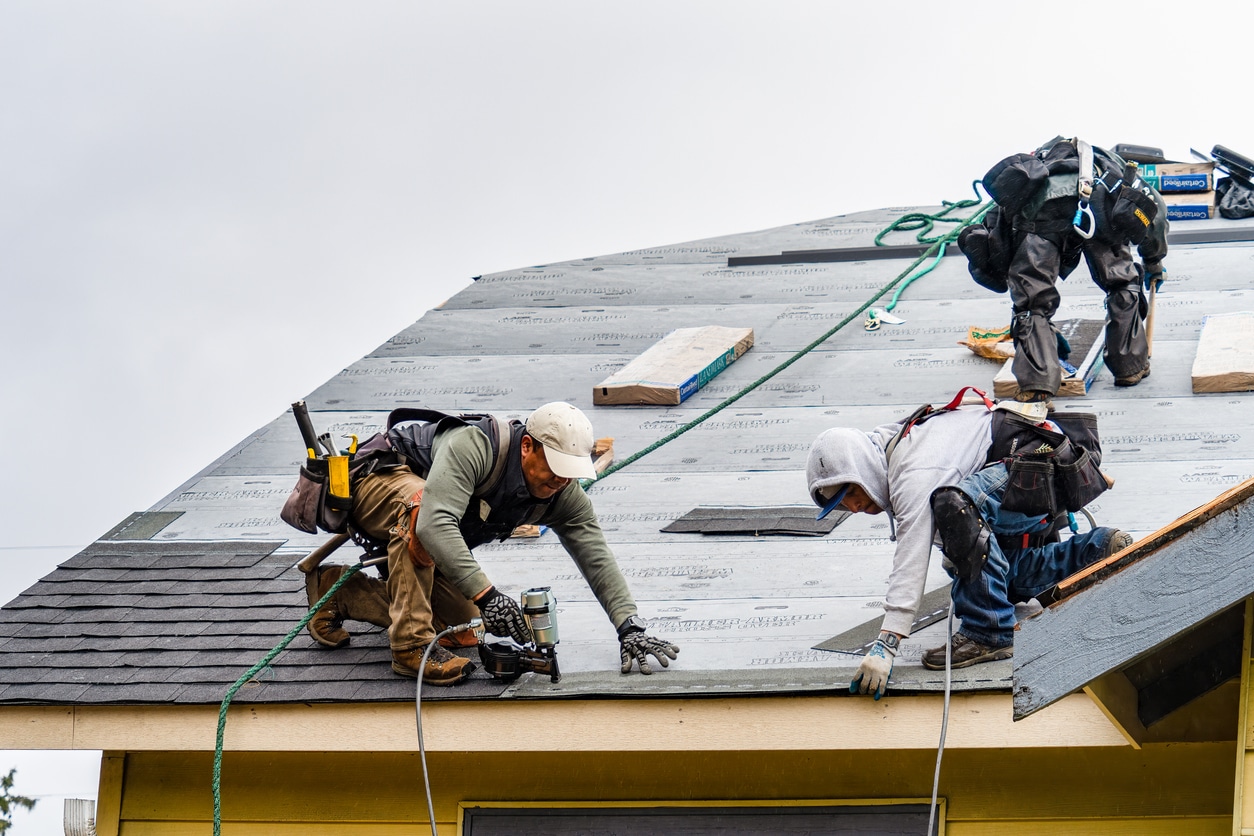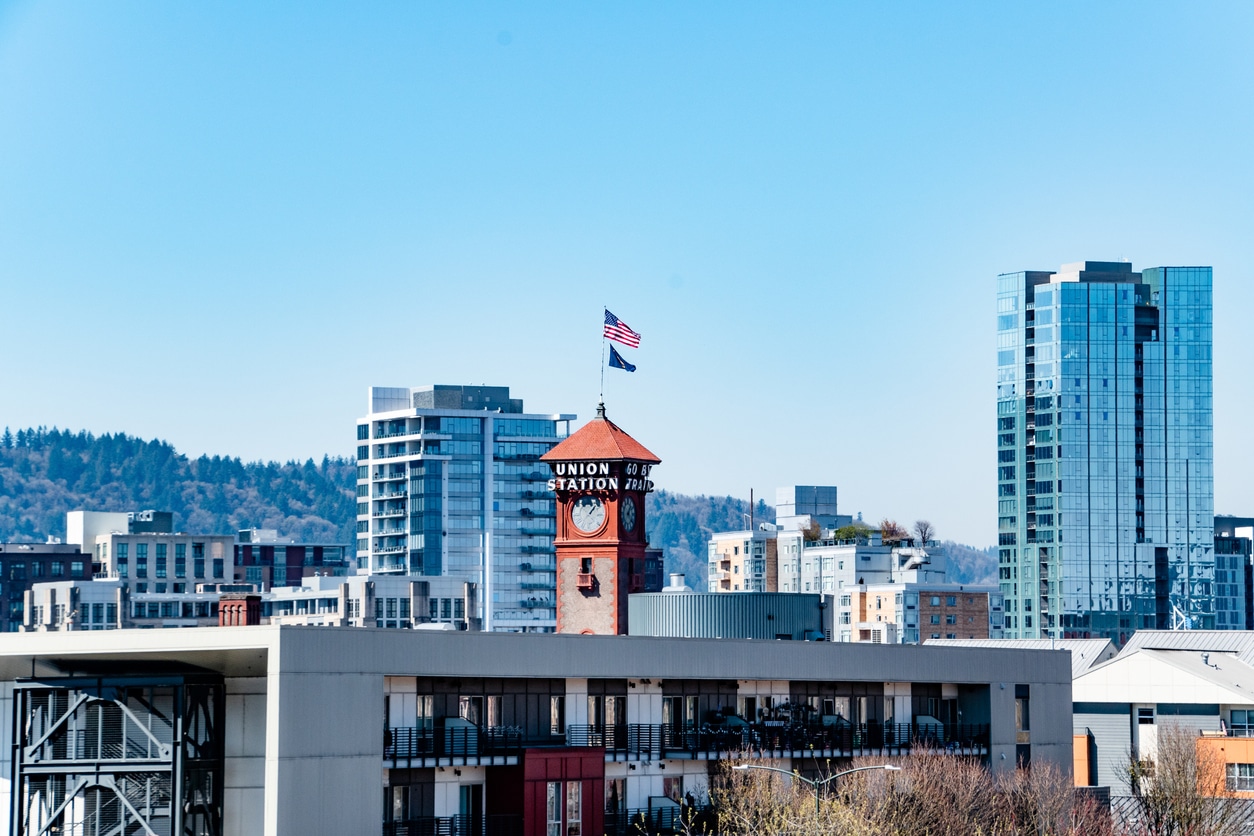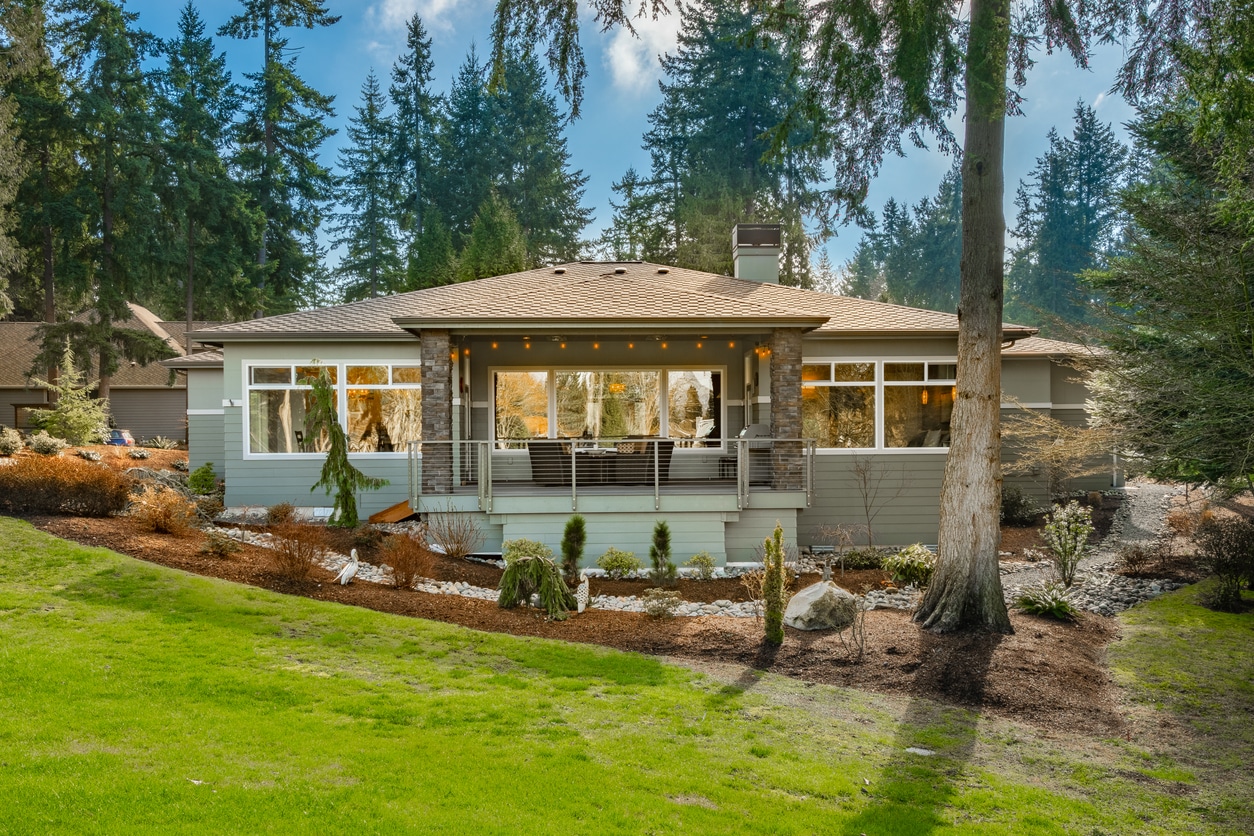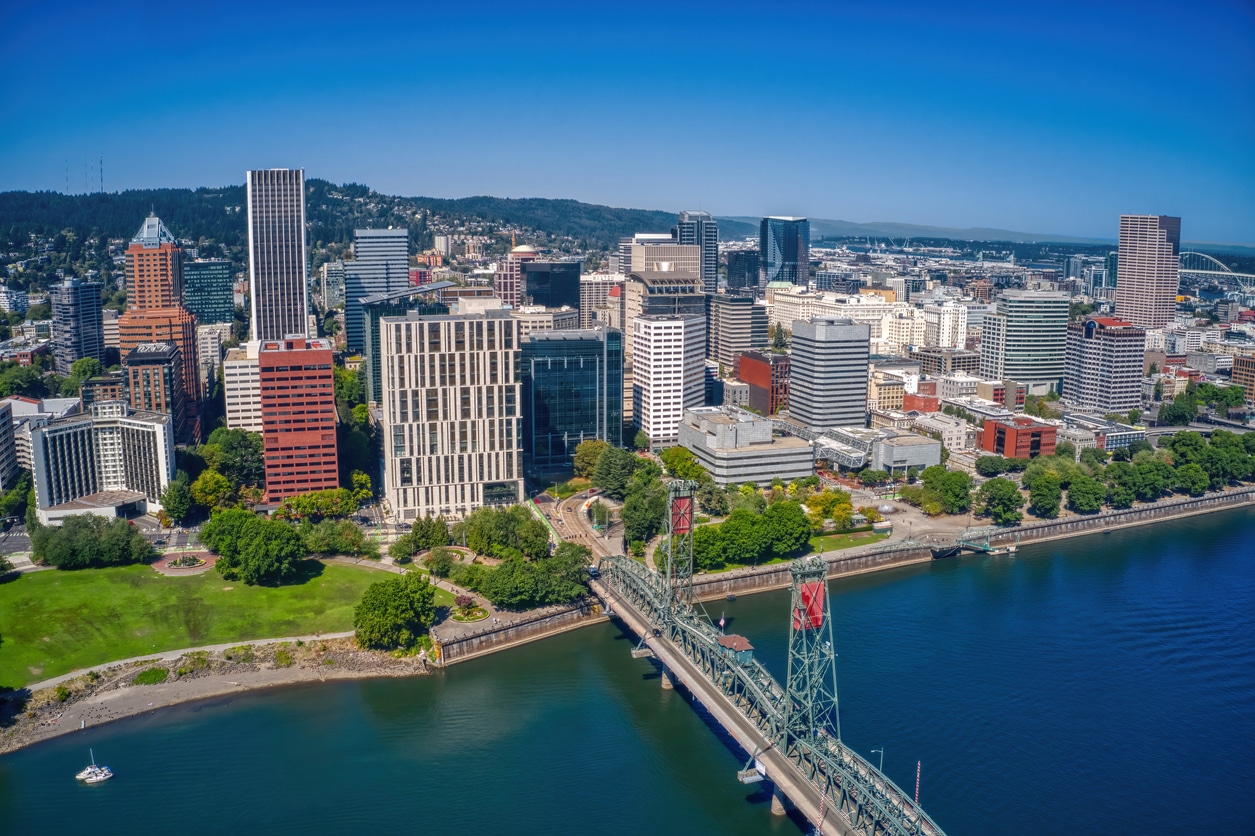Top 5 New Roof Types to Install in the Pacific Northwest

Updated 06/2025
A roof is easy to take for granted, but wear and tear and storm damage can lead to significant repair and replacement costs. When those times come, you’ll find that the pricing and durability of today’s roof options range significantly depending on the type you choose. Additionally, new options hit the market, which may leave you wondering which roofing material is the best choice today.
Knowing what works for the weather in your immediate area helps you narrow down selections and ensure you get the most for your dollar, regardless of whether your home is your “forever home” or one you plan to sell. A new or upgraded roof adds value to the home. A fresh roof with clean lines and gutters can dramatically increase the curb appeal of homes that are worn down or potentially scary-looking to a homebuyer. Additionally, most lenders require a roof that is not leaking and in reasonable condition before funding a homebuyer’s loan.
Here are the top five roofing material options for Pacific Northwest homes, including the latest cutting-edge roofing solutions that continue to gain popularity each year.
What Makes Pacific Northwest Roofs Unique?
A major factor in choosing the best roofing material for your home is the local weather. Homes in the Pacific Northwest (PNW) experience wet weather from rain and snow, as well as mold and mildew. Gusty winds are also common.
The more the roof material aligns with local conditions, the less you will need to repair and maintain it, offsetting your overall costs.
Factors that Figure Into Roofing Costs
When reviewing the costs per square foot, pricing will vary depending on the type and complexity of your roof, as well as the material used. Each material also has a market value that fluctuates over time. However, the biggest cost factor is often labor, which can account for up to 60% of the total cost. You will benefit from getting multiple bids when hiring a company to do the work.
Note that labor costs fluctuate based on the season, with the highest rates in spring and summer, when the weather is most conducive to work. This also means that installers are frequently booked out during spring and summer. Although installing a new roof in the fall or winter rainy season costs less, it may be impossible or too risky in your area. Lean on professional advice and direction, and always obtain multiple bids before choosing a roofing contractor.
Top 5 New Roof Types to Install in the Pacific Northwest
Let’s take a look at the top 5 roofing materials used in the Pacific Northwest, including some eco options you may not have considered before.
1. Asphalt Shingle Roofs in the Pacific Northwest
Asphalt (also known as three-tab) is the most common type of roofing in the Portland area. It is the baseline standard most everyone is familiar with and is very effective in many scenarios and settings.
Asphalt Roofing Cost and Lifespan
This type of roofing runs $2.50 to $4 per square foot and lasts 15-30 years. Note that a quarter to a third of the price is labor, which is lower than that of other materials, but this makes sense because it is relatively easy to install.
As with all materials, there are pros and cons of asphalt material worth knowing:
Asphalt Roof Pros
- The least expensive type of roofing
- Easy to source and install
- More recyclable now than in the past
- Effective in standing up to the elements
- Comes in a variety of colors and styles
- Individual shingles can be replaced
Asphalt Roof Cons
High winds can cause damage
- The porous surface holds moisture
- Can mildew easily (especially in the PNW climate)
- Not the most energy-efficient
- Not the most durable
- Some still made from petroleum products
- Shorter life span of 15-30 years
- Shorter warranties ranging from 5 to 20 years
2. Metal Roofs in the Pacific Northwest
If you’re looking for a durable roof option and enjoy the sound of rain pattering overhead, then a metal roof might be the perfect choice for you. The material is an investment, but there are plenty of reasons to consider it. Metal is a common choice in the PNW, particularly in areas with heavy snowfall or tall trees that overhang the roof.
The most common metal roofing material found in Portland is zinc-coated steel.
Metal Roofing Cost and Lifespan
Metal is a high-end option that costs between $8 and $16 per square foot and lasts 40 to 70 years. Pricing varies depending on where you purchase and the type of materials used. Prices range from lowest to highest are steel, aluminum, zinc, and copper.
Metal Roof Pros
- An ideal material for Portland’s climate
- Durable, resistant to climate conditions
- Keeps homes cool in summer, making them energy-efficient
- Durable option for huge PNW trees that hang over the roof, dropping heavy limbs and debris
- Works well at shedding water
- Limits moss and algae growth
- Stylish, many attractive options are available
- Steel comes in galvanized, weathering, and galvalume
- More environmentally friendly than asphalt
- Copper is extremely long-lasting and has a low melting temperature
- Zinc is extremely long-lasting and resistant to corrosion
- Aluminum is long-lasting and resistant to corrosion
- Metal roofs are recyclable
- Metal roofs often last 40 to 70 years.
Metal Roof Cons
- It can be more expensive than other types of roofing
- Copper can develop a patina
- Can dent easily, leading to leaks
- It can be too noisy for some
3. Tile Roofs in the Pacific Northwest: Clay, Concrete, or Slate
Tile roofs can make an aesthetic statement and come in clay, concrete, and slate. These tiles come curved, flat, fluted, or interlocking. In Portland, you’ll see primarily concrete tile roofs with clay here and there.
Slate is the least common because of its high cost, but it lasts up to 100 years, making it a smart choice if you live in the home for a long time. Reclaimed materials are relatively easy to find. An alternative to natural slate is composite slate. The tiles are cheaper and lighter.
Clay, Concrete, or Slate Tile Cost and Lifespan:
Concrete: $8 to $20 per square foot, and a lifespan of 50 to 75 years.
Clay : $10 to $15 per square foot and a lifespan of $50 to $100 years.
Slate: $22 to $43 per square foot and last from 75 to 200 years. The high range for slate is due to the type of slate used. Natural slate is the most expensive, while hybrid and synthetic slate cost less.
Clay, Concrete, or Slate Tile Pros
- Attractive, earthy appearance
- Resistant to fire, water, mold, and fungus
- Environmentally friendly
- Reclaimed tiles are relatively easy to find
- Long life expectancy, often 50 to 200 years
Clay, Concrete, or Slate Tile Cons
- Heavy! Roof tiles can crack homes and foundations not designed for them (I’ve seen it)
- More expensive materials and installation, maintenance, and repair
- Many have poor installation (be sure to hire a professional)
- Can easily break (HVAC and other workers can break tiles while walking on the roof)
- Tiles come in lots that are hard to match later if a few get broken
4. Cedar Shake Shingle Roofs in the Pacific Northwest
Beautiful and earthy, wood shake shingles are made from cedar and add a pleasing aesthetic to your home’s curb appeal. However, they have notable downsides that have led some Oregon cities to limit their usage.
Cedar Roof Cost and Lifespan
A cedar roof will cost you somewhere between $10 to $14 per square foot and last 30-50 years. Remember that cedar and other wood styles require more frequent maintenance and repairs than other materials on this list.
Cedar Roof Pros
- Beautiful, natural appearance that fits well with Oregon’s home designs and nature
- Easier to install yourself than some other materials
- Long life span, 30 to 50 years or more
- Energy-efficient
- Environmentally friendly
Cedar Roof Cons
- Costly to install and maintain
- High maintenance is required to prevent leaks and damage
- Deteriorate quickly
- Require additional insect- and mold-resistant treatments
- They are prone to fire, so some cities don’t allow them.
5 Eco Roofing Solutions
Newer roofing options are gaining popularity due to their functionality and sustainability benefits. They serve as eco-solutions and still hold up in the Pacific Northwest climate.
Here’s a look at the top options offered today:
Solar tiles: These tiles resemble traditional tile materials but also generate clean energy for your home.
Green roofs: These are made of vegetation that offers excellent insulation, reduces stormwater runoff, and adds to local urban biodiversity. They are truly a “green” option.
Cool Roofs: The materials listed in our top 5 or closely resemble them in look. They are also green. They reflect more sunlight and absorb less heat than standard roofs, which helps keep energy bills down. They can be done as tiles resembling the abovementioned materials or as protective coatings on existing roofs (for instance, flat roofs).
Eco Roof Costs and Lifespan:
- Green Roofs: $10 to $50 per square foot, and lasting 40 to 50 years
- Cool Roofs: $3.50 to $26 and between 15 to 30 years
- Solar tiles: Tesla makes a version at around $63 per square foot and that lasts 25 to 30 years and comes with a 25-year warranty
Pros and Cons of Each:
Pros
- Solar tiles: More aesthetically pleasing than traditional solar panels.
- Green roofs offer improved insulation and stormwater management, while also benefiting biodiversity and addressing concerns related to global warming.
- Cool roofs are an excellent option for reducing cooling costs and limiting greenhouse gas emissions, and specialized “coatings” can also improve the lifespan of existing roofs.
Cons
- Solar tiles are less efficient and have higher upfront costs compared to traditional solar panels
- Green roofs are often heavy and may require high weight limits on roofs to function optimally. They also lead to more maintenance issues due to trapping water and becoming a home to pests.
- Cool roofs can increase heating costs in colder climates and can collect dirt and algae, making it a challenge for cool PNW climates.
Thinking of Replacing Your Roof Before Selling?
It can be a big help to talk with an experienced, licensed real estate agent to get advice about how much value a new roof will add to your home and whether it is necessary to replace a roof before going on the real estate market. Call us today at 503-714-1111 or chat with the bot on our site. Our top 1% seller’s agents look forward to talking with you!


